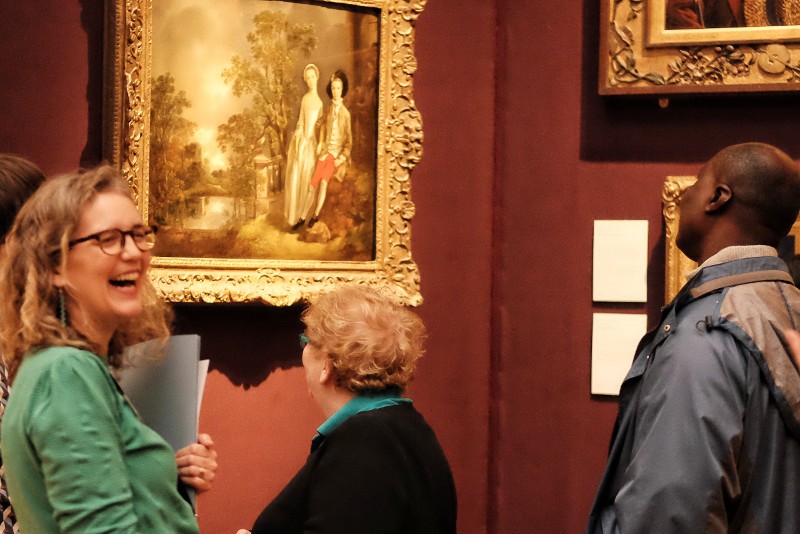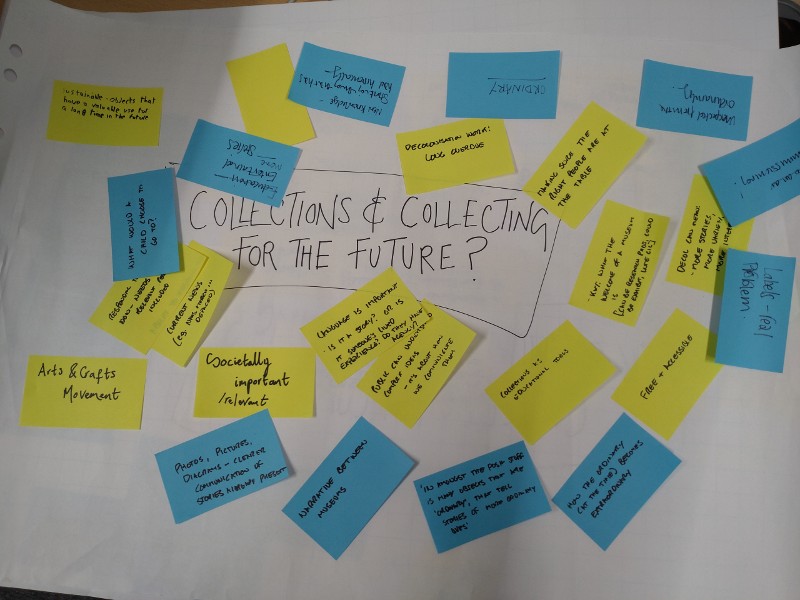Making Connections Through Collections was a pilot series of workshops exploring how the Fitzwilliam Museum chooses which objects and artworks to collect, and the acquisition process used to obtain them.
At the Fitzwilliam Museum, and traditionally in most museums, acquiring objects is handled by a small team of museum staff which is responsible for finding, choosing, and purchasing items for the collection. This is largely the same process as when the Museum was first founded in the 1800s. The purpose of this pilot was to explore what happens when more people are invited into the decision-making process, and how this might lead to a more culturally relevant and diverse museum collection.
Community Research Collaborator, Rob Hales answers questions about the project and his involvement in this.
Q: How did you get involved in the Making Connections Through Collections project? And what was the experience like at the start?
The participants in the Making Connections through Collections workshops were from a broad range of backgrounds and included museum volunteers such as myself, who had been involved in previous projects, along with staff from different departments. This provided us with an interesting and diverse range of voices. However, in the future, I hope that participants without existing ties to the Museum can be brought in.
At our first workshop, the group discussed a painting on display – a portrait of a wealthy family on their estate – that has been part of the Museum’s collection since its early history. This gave us a chance to discuss why this may have been considered important to collect for the Museum at the beginning, and whether those things were still important now. This was followed by a sneak preview of a recently purchased artwork which allowed us to begin to understand what the Museum now considers important to collect and what is missing from the existing collection.

Q: How did the workshops, and your experience as a group, progress over the course of the project?
Our next session focused on an exhibition of Huguenot silverware. Using historic luxury craftworks as its starting point, this exhibition explores modern themes of religious persecution and migration, and examines the impact of Huguenot silversmiths on British craft and fashion. These craftsmen were French Protestants who fled persecution in Catholic France and sought refuge in Britain.
The exhibition provided us with ideas and context when we moved on to discuss several newly acquired pieces of applied art. These were pieces of pottery featuring typically colonial designs such as romanticized and unrealistic displays of “exotic” locations, painted over with modern buildings from the same location, or pieces painted to include depictions of people who were historically not included in the traditional scenes.
We discussed the importance of having objects in the collection that allow for these themes to be present in the Museum. Including these objects and references to themes such as immigration and colonialism can allow people to gain a new understanding of what existing objects in the collection represent.
Q: How did the project give you, and others in the group, a chance to voice your own opinions?
In our third session, we were asked to choose and share with the group our thoughts on a Museum object that we have a connection with. I focussed on the Mina’i ware bowls in the Islamic Gallery. These bowls are Persian pottery exquisitely decorated in enamel using an artistic style based on illuminated manuscripts.
To me, these are some of the most interesting objects in the collection and I wanted to highlight them as I feel they aren’t displayed prominently despite their importance in art history. They are the first type of pottery to use overglaze enamel and the last remaining evidence of a lost illumination style. There is no current connection between these and the illuminated manuscripts also on display, or to the pottery on display in other galleries.
Q: How did the pilot project finish? And what are your hopes for similar work in the future?
At our final session, we discussed museum collection policies and started creating a vision of what we want the purpose of our group to be going forward, and what outcomes we would like to see at the Museum from our work. As part of this we developed a “story of change” where we wrote down the important themes we have found throughout the sessions, what work we felt needs to continue from this research project, and what future outputs we hope to see from this in the Museum.


While this project is only the first step towards a more modern, fairer and relevant collection process at the Fitzwilliam museum, it has been fantastic to work with other participants and staff who have brought a great amount of insight and enthusiasm to the project. Since the pilot finished at the end of 2022, we have come back together to continue our work. As the Connections group, we’re hopeful that we can start to see our work lead to impacts for the Museum and for its visitors and that we can spark changes across the Museum.







